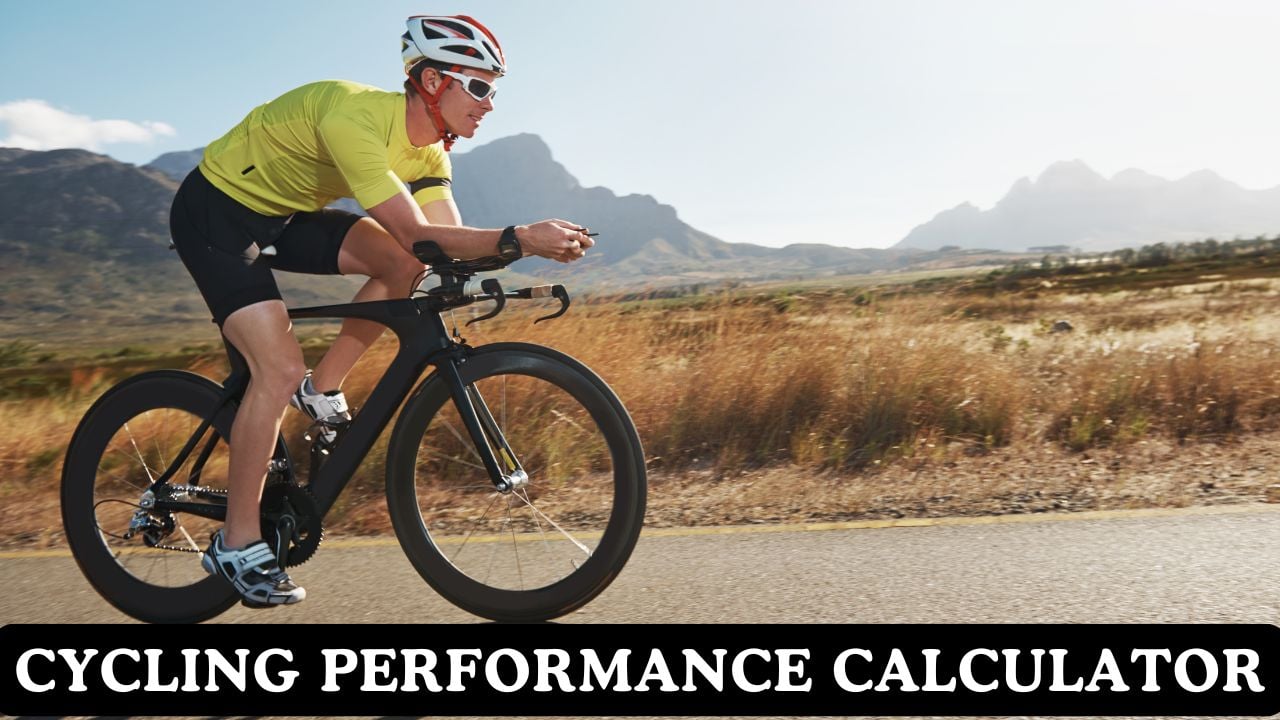🚴♂️ Cycling Performance Calculator
Analyze your cycling power, speed, and performance with scientific precision

Complete Guide to Cycling Performance Analysis
Our advanced cycling performance calculator provides comprehensive analysis including power output, FTP estimation, VO2 max calculations, and speed analysis. Unlike simple speed calculators, this tool uses physics-based formulas accounting for aerodynamic drag, rolling resistance, and rider efficiency. You’ll get personalized performance standards, training zone recommendations, and detailed metrics that professional cyclists and coaches use to optimize training and performance. Learn more about fitness benefits and exercise to understand how cycling improves overall health and athletic performance.
⚡ Power Output & FTP: The Key Cycling Metrics
Power output (measured in watts) is the most important metric in modern cycling, representing the mechanical work you’re producing. Your FTP (Functional Threshold Power) is your maximum sustainable power for about 1 hour – essentially your cycling fitness baseline. Elite cyclists can maintain 400-500W, while recreational cyclists typically produce 150-250W. The calculator uses validated physics formulas including aerodynamic drag (CdA = 0.40 for recreational cyclists) and rolling resistance (Crr = 0.004) to provide accurate power estimates. Research shows that cyclists training with power meters improve 15-25% faster than those using heart rate alone. Strong legs are essential for generating the power needed to overcome air resistance and gravity while cycling.
🫁 VO2 Max & Cycling Fitness Assessment
VO2 max measures your maximum oxygen utilization during exercise – the gold standard for cardiovascular fitness. Elite cyclists achieve 70-85 ml/kg/min, while trained amateurs reach 50-65 ml/kg/min. The calculator estimates VO2 max using your power output and body weight, accounting for cycling efficiency (typically 20-25% for recreational cyclists). Higher VO2 max values correlate strongly with better cycling performance, especially for longer rides where aerobic capacity becomes limiting. Regular cycling training can improve VO2 max by 15-25% within 12 weeks. Combine cycling with core strengthening exercises to improve oxygen utilization efficiency and maintain proper cycling posture throughout long rides.
Scientific Formulas & Cycling Performance Calculations
Our calculator uses scientifically validated formulas developed through extensive cycling research and biomechanical analysis:
Power Output Formula (Physics-Based)
Power calculation incorporates aerodynamic drag and rolling resistance: P = P_aerodynamic + P_rolling
Aerodynamic Power: P_aero = 0.5 × CdA × ρ × v³ (CdA = 0.40 m² for recreational cyclists)
Rolling Resistance: P_rr = m × g × Crr × v (Crr = 0.004 for road cycling)
Research validates
these physics-based calculations provide superior accuracy compared to simple speed-based estimates.
FTP (Functional Threshold Power) Calculation
FTP estimation based on experience-adjusted power output: FTP = Average Power × Experience Factor
Experience Factors: Beginner (0.75), Novice (0.80), Intermediate (0.85), Advanced (0.90), Elite (0.95)
Scientific Basis: FTP represents ~95% of your 20-minute maximum power output.
Training studies show
FTP-based training improves performance 15-25% more effectively than traditional methods.
Cycling VO2 Max Estimation
VO2 max calculated from power-to-weight ratio with efficiency adjustments: VO2 = (W/kg) × Efficiency Factor
Efficiency Factors: Beginner (10), Novice (11), Intermediate (12), Advanced (13), Elite (14) ml/kg/min per W/kg
Cycling-Specific: Accounts for seated position and muscle mass engagement patterns different from running
Research Validation: Studies confirm
strong correlation (r = 0.85-0.95) between power-based VO2 estimates and direct gas exchange measurements in cyclists.
Using Power Meters & Training Zones for Better Cycling
🎯 Training with Power Zones
Use your FTP to create precise training zones for optimal adaptation. Zone 1 (Active Recovery): ≤55% FTP – long, easy rides for recovery and aerobic base building. Zone 2 (Endurance): 56-75% FTP – tempo rides that improve fat metabolism and sustainable power. Zone 3 (Tempo): 76-90% FTP – lactate threshold training for improved sustainable intensity. Zone 4 (Threshold): 91-105% FTP – VO2 max intervals for maximum aerobic capacity gains. Zone 5 (Maximum): >105% FTP – sprint intervals for neuromuscular power development. Research shows structured training in these zones improves FTP by 5-15% every 4-6 weeks. Check out muscle recovery techniques to optimize training adaptations and prevent overtraining.
📈 Tracking Progress & Performance Improvements
Test your FTP and power output every 4-6 weeks to measure training effectiveness. Look for 2-5% improvements in FTP as the primary indicator of fitness gains. Monitor your power-to-weight ratio (W/kg) – small improvements here translate to significant performance gains, especially on hills. Track your best 20-minute power, 5-minute power, and 1-minute power to see improvements across different effort durations. Keep a training log noting workout type, duration, average power, and how you felt. Supplement your cycling with back strengthening exercises to improve posture, power transfer, and reduce injury risk during long rides.
🏁 Race Strategy & Competition Preparation
Use your power data to develop race strategies based on course demands and your strengths. For time trials, maintain steady power at FTP with minor adjustments for wind and terrain. For road races, conserve energy in the peloton while being ready to attack at critical moments. For criteriums, focus on maintaining high average power with recovery during pack riding. For hill climbs, push power-to-weight ratio while maintaining sustainable efforts. Use your power meter to practice pacing strategies and learn your optimal race power. Your FTP and power zones will help you avoid starting too fast or blowing up late in races. Develop your core strength to maintain proper aerodynamic position throughout races and improve power transfer to the pedals.
⚕️ Important Safety Notes for Cycling Performance
This cycling calculator provides estimates based on scientifically validated formulas and should be used for educational and training guidance purposes. Individual cycling performance can vary significantly due to factors like bike fit, equipment quality, terrain, weather conditions, and personal physiology. Always warm up properly before high-intensity cycling sessions and consult with a coach or healthcare professional before making significant changes to your training. Power meters and heart rate monitors can provide more accurate real-time data than estimates. The calculations work best when you maintain consistent effort throughout your test ride.
